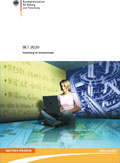Über den edaWorkshop14

Der edaWorkshop als die zentrale deutsche Veranstaltung zu Elektronik, Design und Anwendungen (EDA). Er bietet beste Voraussetzungen für die Publikation und Diskussion von anwendungsnahen EDA-Forschungsergebnissen. Die ausgewogene Präsenz von Wissenschaft und Anwendung schafft ideale Möglichkeiten zum fachlichen Austausch mit wissenschaftlichem Anspruch, verbunden mit industriellem Nutzen. Besonders hervorzuheben ist die starke Präsenz führender Industrieunternehmen, die vielfältige Kooperationen zur Überführung von Forschungsergebnissen in einen wirtschaftlichen Nutzen ermöglicht.
Gleichzeitig ist der edaWorkshop auch die zentrale Veranstaltung zum Ergebnisaustausch für alle vom BMBF geförderten Projekte im Bereich Elektronik, Design und Anwendungen. Er dient der Kommunikation zwischen Fachleuten und dem Fördergeber und unterstützt den Ergebnistransfer bei öffentlich geförderten Forschungs- und Entwicklungsprojekten. Seit seiner Gründung im Jahr 2007 konnte der erfolgreiche Workshop jährlich mehr als 100 Teilnehmer anziehen.
Die zweitägige Veranstaltung hält die Balance zwischen Information und Kommunikation. Sie bietet nicht nur eine große Palette von Vorträgen zu Fachthemen und EDA-Forschungsprojekten, sondern auch ausführliche Gelegenheiten für fachliche Gespräche und zum Networking. Eine umfangreiche Posterausstellung mit Forschungsergebnissen, in der auch Demonstratoren und Prototypen vorgestellt werden, bietet hierzu ideale Rahmenbedingungen. Wissenschaftler, Entwickler und Anwender sind eingeladen, Beiträge zum edaWorkshop einzureichen; insbesondere Einreichungen zu Ergebnissen aus EDA-Projekten sind willkommen. EDA-Projekt-Teams können Ihre Ergebisse außerdem in der Posterausstellung präsentieren.
Der edaWorkshop wird vom edacentrum zusammen mit dem BMBF und der GI/GMM/ ITG-Kooperationsgemeinschaft „Rechnergestützter Schaltungs- und Systementwurf“ organisiert.
Der edaWorkshop - Katalysator der EDA-ForschungDer Entwurf von integrierten Schaltungen und Systemen stellt höchste Anforderungen an Entwicklungsingenieure und an die von ihnen verwendeten Entwurfsmethoden und -werkzeuge. Dazu gehören die effiziente und herstellungs- und anwendungsorientierte Entwicklung von sicheren, sparsamen, robusten und zuverlässigen Systemen von hoher Komplexität, mit sehr kleinen Strukturen und insbesondere der Entwurf von Analog- und Mixed- Signal-Schaltungen.

Die Förderung erstreckt sich auf die EDA-Beiträge zu den in dem BMBF-Forschungsprogramm für die Informations- und Kommunikationstechnologie (IKT2020) aufgeführten Themen. Das Programm ist auf fünf Anwendungsfelder mit hoher Wertschöpfung und hohem Arbeitsplatzpotenzial fokussiert. Im Einzelnen sind das die Bereiche Automobil/Mobilität, Maschinenbau/Automatisierung, Gesundheit/Medizintechnik, Logistik/Dienstleistungen und Energie/Umwelt.
Der edaWorkshop ist die zentrale Plattform zur Präsentation und zum Austausch der Lösungsansätze und Ergebnisse aus den EDA-Projekten des „IKT 2020“-Programms. Diese Projekte werden eingeladen, ihre Ergebnisse in Vorträgen und Postern vorzustellen. Dabei soll der Anwendungsbezug zu den gesellschaftlich relevanten Themenbereichen im Mittelpunkt stehen.
Gleichzeitig ist der edaWorkshop ein wissenschaftlicher Workshop, auf dem auch andere für EDA relevante Forschungsergebnisse dargestellt werden können und sollen. Durch die einzigartige Kombination von Wissenschaft und Anwendung ergeben sich vielseitige Chancen zum Dialog sowie zur Vorbereitung einer industriellen Verwertung von Forschungsergebnissen.
